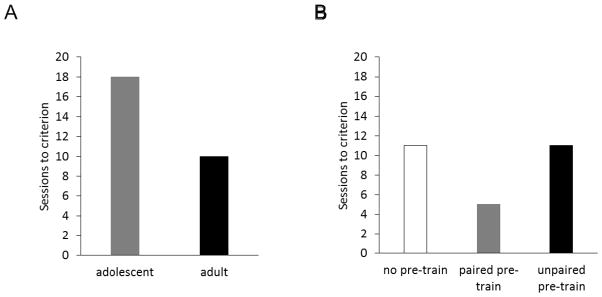Figure 2.
A) Number of daily training sessions required by adolescent (started training on PND 35) and adult (PND 70) rats to consistently exhibit significantly more responding to the target on reinforced versus non-reinforced trials (adapted from [19]). Criterion was 3 consecutive sessions in which the group mean difference in responding during reinforced and non-reinforced trials was significantly greater than zero (i.e., Z-score of at least 2.325, p<0.01). B) Results of an experiment to test whether adolescent rats were impaired in acquiring the contingencies during negative occasion setting, or in expressing that learning. Rats in the ‘paired pre-train’ group received six sessions of negative occasion setting training starting on PND 35. Rats in the ‘unpaired pre-train’ group were treated similarly but the stimuli were presented randomly and in an unpaired fashion. Both groups remained in their home cages for 9 days after the pre-training sessions. Then when they were 50 days only, they resumed negative occasion setting training. The no pre-train group did not receive any pre-training and had its first experience with the negative occasion setting procedures starting on PND 50.

